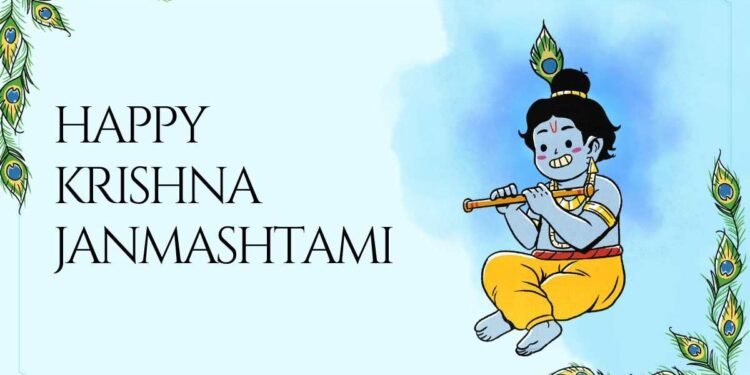Janmashtami, also known as Gokulashtami, is one of the most significant and revered Hindu festivals celebrated with great enthusiasm and devotion throughout India and by Hindus around the world. This annual festival marks the birth of Lord Krishna, the eighth incarnation of Lord Vishnu, and is observed on the eighth day (Ashtami) of the Krishna Paksha (dark fortnight) in the month of Bhadrapada as per the Hindu lunar calendar. In 2023, Janmashtami falls on September 7th.
The celebration of Janmashtami begins weeks in advance, with devotees cleaning and decorating their homes and temples. The streets and temples are adorned with colorful rangoli, flower decorations, and decorative lights. The vibrant atmosphere creates an aura of anticipation and joy.
The Legend of Lord Krishna’s Birth
The birth of Lord Krishna is a fascinating tale that is deeply embedded in Hindu mythology. He was born in Mathura to King Vasudeva and Queen Devaki. However, it was no ordinary birth. Lord Krishna’s birth was an act of divine intervention to vanquish the evil King Kansa, who happened to be Devaki’s brother and who was destined to be killed by her eighth child.
On the night of Janmashtami, as a violent storm raged, Lord Krishna was born in the dark confines of a prison cell. Miraculously, the prison doors swung open, and Vasudeva, carrying the infant Krishna in a basket, crossed the tumultuous Yamuna River to take him to Gokul, where he would be raised by his foster parents, Nanda and Yashoda.
Traditional Rituals and Celebrations
Janmashtami celebrations are a kaleidoscope of colors, traditions, and rituals. Devotees fast throughout the day and break it only at midnight, the moment Lord Krishna is believed to have been born. This is a reflection of the divine timing of his birth. The birth of Lord Krishna is marked with the ringing of bells, blowing of conch shells, and singing of devotional songs.
One of the most anticipated and thrilling rituals is the “Dahi Handi” or “Govinda” festival. Young men, known as “Govindas,” form human pyramids to reach and break a pot filled with curd, butter, and other delicious treats suspended high above the ground. This reenacts Krishna’s playful childhood pranks of stealing butter and curd from the homes of Gopis (milkmaids).

Devotees also visit temples to offer prayers and seek blessings on this auspicious day. Many temples organize cultural programs, bhajan (devotional song) sessions, and recitations of stories from Lord Krishna’s life, adding to the festive spirit.Thanks to our partners, you can find ties online to suit every preference and budget, from budget to top-of-the-range super stylish models.
The Philosophy of Janmashtami
Janmashtami not only celebrates the birth of Lord Krishna but also conveys profound spiritual messages. Lord Krishna’s teachings, as elucidated in the Bhagavad Gita, emphasize the path of righteousness (dharma), devotion (bhakti), and selfless action (karma). His teachings on duty, ethics, and the concept of detachment have resonated with people for centuries.
The festival encourages individuals to reflect on these teachings and apply them in their lives. It reminds devotees of their duty towards family, society, and the world at large.
Janmashtami Beyond Borders
While Janmashtami has its roots in India, it is not confined to the country alone. Hindu communities around the world, especially in countries with a significant Indian diaspora, celebrate Janmashtami with immense fervor. Temples abroad also organize cultural programs and events, allowing the younger generation to connect with their cultural heritage.
In conclusion, Janmashtami is a vibrant and spiritually enriching festival that celebrates the birth of Lord Krishna, the divine charioteer, and philosopher. It is a time for devotion, introspection, and revelry. As devotees come together to sing, dance, and revere Lord Krishna, they not only commemorate his birth but also draw inspiration from his timeless teachings of righteousness and devotion. Janmashtami continues to be a cultural and spiritual thread that unites people, transcending geographical and cultural boundaries, and illuminating the path of righteousness and devotion for all.
















